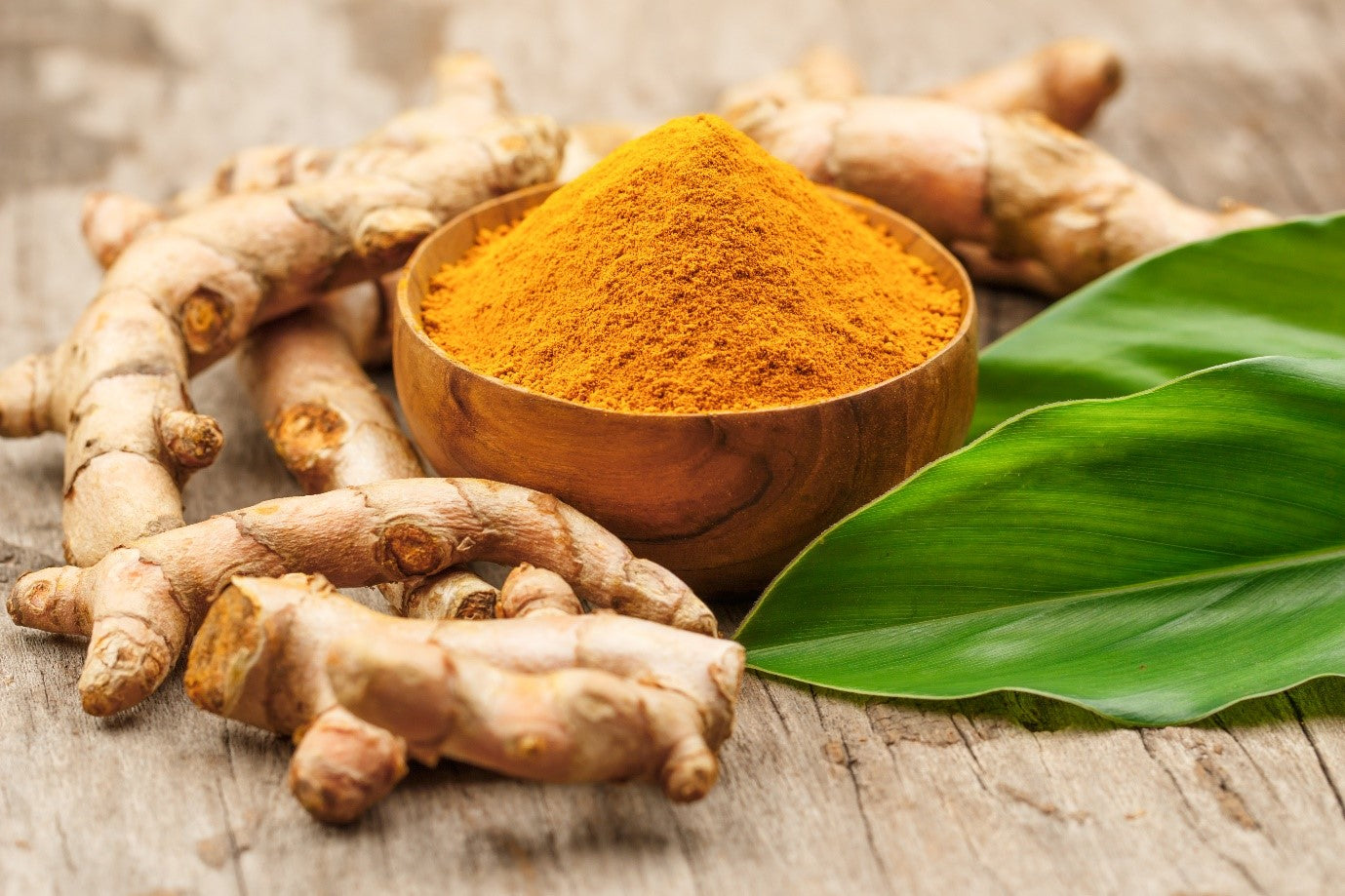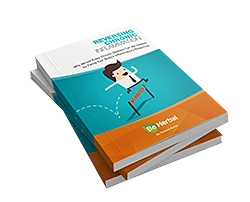The bright-colored, highly flavored, rich spice known for its health benefits is turmeric. It is a golden Spice, which is a real powerhouse for wellness. Since ancient times, turmeric has been in use in ayurvedic medicine and is native to Southeast Asian countries, including India. It is renowned for its immense benefits for the body, mind, and soul.

Many beauticians also swear by turmeric’s merits and use it as an ingredient in their masks to add a natural glow to the skin. Whether you use turmeric as a spice in your meal, as gold milk, or in homemade topical remedies, what’s certain is that you will reap its great benefits.
Read on to know how turmeric is beneficial for folliculitis and how you can use it to treat your condition.
What Is Folliculitis?
There are billions of hair follicles present on the skin of a human. The follicles can be considered small sacks, often filled with pus, becoming inflamed because of infection. When these follicular sacs are blocked, swelling, red bumps, and sometimes fever can occur. This condition is called folliculitis.
Folliculitis can occur due to various reasons. These include:
- Improper fitting of clothes causing friction
- Acne on the skin
- Shaving, leading to fiction
- The reactive activity of the skin to some makeup products or ointments
- Wearing makeup for too long, especially letting it stay overnight on the skin
- Long immersions in saunas and warm pools, giving rise to bacterial growth
- In-grown hair within the skin
- Plucking or waxing your hair
- Utilizing dirty razors when shaving
- Use of corticosteroids
In general, folliculitis occurs due to the bacterium called staphylococcus. Under normal conditions, this microbe is present on our skin without causing any harm. But, when these bacteria penetrate your skin through wounds or cuts, they can cause infection in the follicles. As a result, inflammation occurs, which causes itching and can be painful and miserable to sight. [1]
Therefore, many people search for natural remedies that do not have side effects and simply offer a cure for folliculitis.
Turmeric For Folliculitis
While turmeric is a must-to-add ingredient in most dishes, it is known for its therapeutic potential. Its use dates back to 4000 years ago when the natives used it as herbal medicine to cure various ailments such as skin diseases.
Turmeric, scientifically known as Curcuma longa, is widely used world-over. It has anti-inflammatory antioxidant, antimicrobial and antitumor potential that makes it highly acceptable. [2]
As of now, evidence has started to support what ancient dwellers used to claim years ago about turmeric, that there are certain compounds present in it that have curative potential. These compounds are known as curcuminoids, out of which curcumin is the most significant.[3]
What Is Curcumin?
Curcumin is the chief active component of turmeric, having potent antioxidant and anti-inflammatory properties. The bright yellow color of turmeric comes from this compound. While curcumin gives turmeric its medicinal properties, its turmeric percentage is not very high and is about 3% by weight. [4]
Although turmeric can be used in foods, the amount of curcumin would be significantly less to bring about noticeable effects. So, most studies, for this reason, use turmeric extract to obtain curcumin for investigation. Hence, in order to reap the maximum benefits, you would have to take turmeric extract or use it as an oral supplement.
In case someone wants to use curcumin extract, what they should know is that curcumin is insoluble in water and absorbs poorly into the bloodstream. Thus, consuming it with black pepper would help as it contains a natural ingredient, piperine, that improves curcumin’s absorption by 2000%. [5]
Curcumin is a fat-soluble compound, so taking it with fatty foods can also support its absorption. What’s more? Evidence has suggested that curcumin’s anti-inflammatory property is so strong that it matches the anti-inflammatory potential of certain drugs, that too, without their adverse effects. [6,7] It works on a cellular level, blocking the gene that brings about inflammation thereby, soothing the inflammatory conditions.
Curcumin For The Treatment Of Skin Infections

The bioactive components in several therapeutic herbs have been known to exhibit antimicrobial potential. In order to investigate this, research has been carried out to explore the antibacterial property of curcumin present in turmeric in light of its colossal health benefits. It has been reported by in vitro studies that staph. Aureus, a gram-positive bacterium, is prone to curcumin’s inhibitory properties.
Moreover, human effectiveness has also been proven to combat methicillin-resistant staph. Aureus (MRSA) both in conjunction with other traditional antibiotics as well as solely on its own.
The bacteria-killing property of the blue-light-activated curcumin is considered to be significantly dose-dependent. This comes from curcumin’s photolytic degradation product, vanillin, which disrupts the bacteria’s cell membrane. [8, 9]
Is Curcumin Safe?
Numerous studies have been carried out in humans, in vivo as well as in vitro, to analyze the safety of curcumin. While no acute toxicity is seen in animals, it has been shown that curcumin with copper and certain coenzymes can cause some loss, such as DNA damage and limitation of hepatic tumor inhibition. [10] Only a few non-serious side effects were reported in healthy humans after a single oral dose of 10 - 20 g.
Another 2007 study reported that administration of turmeric powder 1.5g, equivalent to 150 mg curcumin for humans, did not show any adverse effects in humans.[11] Moreover, One more human trial reported that 25 subjects who used curcumin at a dose of 8000 mg per day over three months showed no side effects. [12] Hence, curcumin is considered safe for use.
How To Use Turmeric For Folliculitis?
There are a number of ways you can use turmeric to reap its benefits. These include the following:
- Turmeric powder - you can add turmeric powder to your meals or milk, forming gold milk that can be taken once or twice daily. However, this may contain a minimal amount of curcumin to show noticeable effects.
- Supplements - there are supplements available that can provide turmeric extract with a greater percentage of curcumin. However, choosing the right supplement with the right ingredients is essential as it can affect the absorption of curcumin from your gut.
The best supplements are the ones that comprise piperine, which helps in curcumin absorption, as mentioned above. Beherbal’s Organic Turmeric Curcumin Supplement comes with black pepper integrated that provides piperine.
Topical - the topical regimes for using turmeric include:
- Curcumin -rich creams and ointments
- Curcumin-loaded sponges
- Curcumin-loaded polymeric bandages
- Curcumin-loaded transdermal patches
- And more [2]
How Much Turmeric Should I Take?
While the benefits of using turmeric are immense and widely known, knowing how much to take can be confusing. Studies mostly use turmeric in extract form at a dose of 500 to 2000 mg per day, containing a high concentration of curcumin compared to that present naturally in foods. For example, in an average Southasian diet, the amount of turmeric obtained from food in a day is up to 2500 mg (60 - 200 mg curcumin). [13]
This means that turmeric herb spices comprise about 3% curcumin as compared to the 95% found in turmeric extract. However, turmeric still has health benefits when used as a whole. It has been shown to have positive effects when consuming curry containing turmeric on cognitive health in adults.
There is no concluding consensus on the effective dose of turmeric and curcumin. However, for itchy skin and inflammatory skin conditions, 500 mg of turmeric twice a day (a total of 1500 mg) used for two months is a commonly recommended dose. As there is a lack of evidence on the exact effects of long-term use of turmeric and curcumin, so higher doses are not recommended chronically. [14]
According to the World Health Organisation (WHO), the recommended dose is 0-3 mg per kg (1.4 mg per pound) of body weight, as the daily intake. [15]
Other Benefits Of Turmeric
Curcumin, the active ingredient of turmeric, is known to have strong anti-inflammatory potential, as discussed earlier. Several researchers have indicated that both animal and test-tube studies have shown that curcumin blocks specific biological pathways that cause inflammation. The research gold standard randomized control trials (RCTs) have also explored the effectiveness of curcumin, out of which many have shown significant positive results. For example, a number of studies have reported turmeric to decrease pain in the knee and alleviate arthritis symptoms. [16]
Curcumin is also believed to work as well as Ibuprofen in decreasing pain. In one randomized control trial, 120 overweight subjects were observed who consumed turmeric supplements for three months. In these subjects, a total cholesterol reduction was 32% on average, bad cholesterol (LDL) was reduced by 42%, while triglycerides reduced by 39%. [17]
It also plays a role in improving the quality of life in chronic kidney disorder patients with itchy skin. Research has also reported beneficial effects of turmeric in heart disorders, diabetes prevention. recovery from surgical procedures and irritable bowel syndrome. [18, 19]
Who Should Avoid Using Turmeric?

While turmeric is considered to be safe for use, people with certain conditions should avoid using it. These people include:
- Pregnant and breastfeeding women – research is immature with regards to the effects of turmeric supplements during pregnancy and breastfeeding.
- Gallbladder disease – it is believed that high doses of turmeric can lead to gallbladder contraction, aggravating the symptoms of the disease. [20]
- Kidney stones – as turmeric is also rich in oxalate, it may bind with calcium and lead to renal stones. [21]
- Bleeding disorders – turmeric may slow down the process of blood clotting that can be dangerous to people with bleeding problems. [22]
- Diabetes – turmeric can reduce blood glucose levels to decline. [23]
- Iron-deficiency – components of turmeric can also impede the absorption of iron. [24]
Furthermore, turmeric supplements can also interfere with some drugs such as antidiabetics and blood thinners. [25]
Turmeric is overall not harmful, and people with the aforementioned conditions can use small quantities. However, caution should be exercised, and doctors should be consulted when using turmeric extract in higher doses.
What Are The Adverse Effects Of Turmeric?
- Allergies and dermatitis - Turmeric may cause contact dermatitis and urticaria in some people, especially in those who come in direct contact with curcumin extract on the skin or scalp. These allergies can be immunological; extend beyond the point of exposure or non-immunological; remain restricted to the site of contact. People who are already suffering from allergies are more prone to have an allergic reaction to turmeric. Always do a patch test before continuing the use of turmeric.
- Role in carcinogenesis - It has been shown that curcumin can lead to lung cancer in rats and plays an aggravating role in carcinogenesis.
- Effect on reproduction - Curcumin is said to alter fertility by restricting the motility of human sperms. It is also believed to be potentially useful as an intravaginal contraceptive. It is even thought to inhibit implantation and has a limiting role and reproductive activity. Thus, high amounts should not be used during pregnancy.
- Effect on digestion - If turmeric is taken in high amounts, it can also cause GI disturbances, including nausea, diarrhea, and abdominal pain. People using turmeric in high doses may get digestive ulcerations, rash, headache, and yellow stools.
References:
- Cleveland Clinic medical professional. Staph Infection (Staphylococcus Infection) Cleveland clinic. Sept, 2019. https://my.clevelandclinic.org/health/diseases/21165-staph-infection--staphylococcus-infection
- Vollono L, Falconi M, Gaziano R, et al. Potential of Curcumin in Skin Disorders. Nutrients. 2019;11(9):2169. Published 2019 Sep 10. doi:10.3390/nu11092169
- Nagpal M, Sood S. Role of curcumin in systemic and oral health: An overview. J Nat Sci Biol Med. 2013;4(1):3-7. doi:10.4103/0976-9668.107253
- Tayyem RF, Heath DD, Al-Delaimy WK, Rock CL. Curcumin content of turmeric and curry powders. Nutr Cancer. 2006;55(2):126-131. doi:10.1207/s15327914nc5502_2
- Shoba G, Joy D, Joseph T, Majeed M, Rajendran R, Srinivas PS. Influence of piperine on the pharmacokinetics of curcumin in animals and human volunteers. Planta Med. 1998;64(4):353-356. doi:10.1055/s-2006-957450
- Jurenka JS. Anti-inflammatory properties of curcumin, a major constituent of Curcuma longa: a review of preclinical and clinical research [published correction appears in Altern Med Rev. 2009 Sep;14(3):277]. Altern Med Rev. 2009;14(2):141-153.
- Lal B, Kapoor AK, Asthana OP, et al. Efficacy of curcumin in the management of chronic anterior uveitis. Phytother Res. 1999;13(4):318-322. doi:10.1002/(SICI)1099-1573(199906)13:4<318::AID-PTR445>3.0.CO;2-7
- Moghadamtousi S.Z., Kadir H.A., Hassandarvish P., Tajik H., Abubakar S., Zandi K.A. Review on Antibacterial, Antiviral and Antifungal Activity of Curcumin. BioMed Res. Int. 2014;2014:186864.
- Yang M.Y., Chang K.C., Chen L.Y., Hu A. Low-dose blue light irradiation enhances the antimicrobial activities of curcumin against Propionibacterium acnes. J. Photochem. Photobiol. B. 2018;189:21–28. doi: 10.1016/j.jphotobiol.2018.09.021.
- Frank, N., Knauft, J., Amelung, F., Nair, J., Wesch, H., Bartsch, H. (2003). No prevention of liver and kidney tumors in Lo1n1g-1Evans Cinnamon rats by dietary curcumin, but inhibition at other sites and of metastases. Res. 523–524, 127–135. doi: 10.1016/S0027-5107(02)00328-7
- Sharma, R. A., Steward, W. P., Gescher, A. J. (2007). Pharmacokinetics and pharmacodynamics of curcumin. Exp. Med. Biol. 595, 453–470. doi: 10.1007/978-0-387-46401-5_20
- Chainani-Wu, N. (2003). Safety and anti-inflammatory activity of curcumin: a component of turmeric (Curcuma longa). Altern. Complement. Med. 9, 161–168. doi: 10.1089/107555303321223035
- Amalraj A, Pius A, Gopi S, Gopi S. Biological activities of curcuminoids, other biomolecules from turmeric and their derivatives - A review. J Tradit Complement Med. 2016;7(2):205-233. Published 2016 Jun 15. doi:10.1016/j.jtcme.2016.05.005
- Pakfetrat M, Basiri F, Malekmakan L, Roozbeh J. Effects of turmeric on uremic pruritus in end stage renal disease patients: a double-blind randomized clinical trial. J Nephrol. 2014;27(2):203-207. doi:10.1007/s40620-014-0039-2
- Amalraj A, Pius A, Gopi S, Gopi S. Biological activities of curcuminoids, other biomolecules from turmeric and their derivatives - A review. J Tradit Complement Med. 2016;7(2):205-233. Published 2016 Jun 15. doi:10.1016/j.jtcme.2016.05.005
- Belcaro G, Cesarone MR, Dugall M, et al. Efficacy and safety of Meriva®, a curcumin-phosphatidylcholine complex, during extended administration in osteoarthritis patients. Altern Med Rev. 2010;15(4):337-344.
- Pashine, Lekhani & Singh, J & Vaish, A & Ojha, Sanjeev & Mahdi, A. (2012). Effect of turmeric (Curcuma longa) on overweight hyperlipidemic subjects: Double blind study. Indian Journal of Community Health. 24.
- Satoskar RR, Shah SJ, Shenoy SG. Evaluation of anti-inflammatory property of curcumin (diferuloyl methane) in patients with postoperative inflammation. Int J Clin Pharmacol Ther Toxicol. 1986;24(12):651-654.
- Bundy R, Walker AF, Middleton RW, Booth J. Turmeric extract may improve irritable bowel syndrome symptomology in otherwise healthy adults: a pilot study. J Altern Complement Med. 2004;10(6):1015-1018. doi:10.1089/acm.2004.10.1015
- Rasyid A, Rahman AR, Jaalam K, Lelo A. Effect of different curcumin dosages on human gall bladder. Asia Pac J Clin Nutr. 2002;11(4):314-8. doi: 10.1046/j.1440-6047.2002.00296.x. PMID: 12495265.
- Tang M, Larson-Meyer DE, Liebman M. Effect of cinnamon and turmeric on urinary oxalate excretion, plasma lipids, and plasma glucose in healthy subjects. Am J Clin Nutr. 2008;87(5):1262-1267. doi:10.1093/ajcn/87.5.1262
- Shah BH, Nawaz Z, Pertani SA, et al. Inhibitory effect of curcumin, a food spice from turmeric, on platelet-activating factor- and arachidonic acid-mediated platelet aggregation through inhibition of thromboxane formation and Ca2+ signaling. Biochem Pharmacol. 1999;58(7):1167-1172. doi:10.1016/s0006-2952(99)00206-3
- Neerati P, Devde R, Gangi AK. Evaluation of the effect of curcumin capsules on glyburide therapy in patients with type-2 diabetes mellitus. Phytother Res. 2014;28(12):1796-1800. doi:10.1002/ptr.5201
- Tuntipopipat S, Zeder C, Siriprapa P, Charoenkiatkul S. Inhibitory effects of spices and herbs on iron availability. Int J Food Sci Nutr. 2009;60 Suppl 1:43-55. doi:10.1080/09637480802084844
- Neerati P, Devde R, Gangi AK. Evaluation of the effect of curcumin capsules on glyburide therapy in patients with type-2 diabetes mellitus. Phytother Res. 2014;28(12):1796-1800. doi:10.1002/ptr.5201


